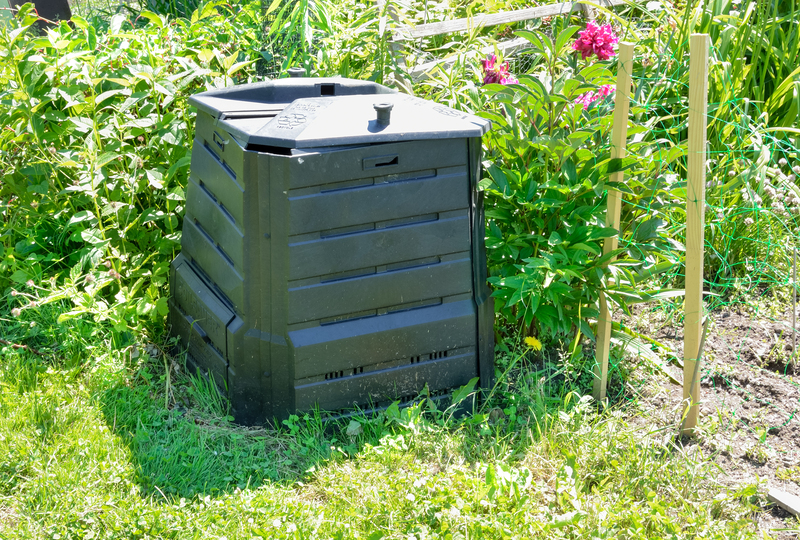Creating an Eco-Friendly Atmosphere in Your Home
With growing awareness about environmental sustainability, many homeowners are looking to create eco-friendly atmospheres within their homes. This guide will explore actionable ways to transform your living space into a haven that is kind to the Earth.
Why Go Green?
Adopting eco-friendly practices in your home doesn't just benefit the planet, but it also offers numerous personal advantages. Reducing energy consumption can lower your utility bills, while utilizing sustainable materials can create a healthier living environment. Additionally, an eco-friendly home can increase property value and enhance your overall quality of life.
Start with Energy Efficiency
- Upgrade to LED Lighting: Switching to LED bulbs is a simple yet effective way to reduce energy use. LEDs are energy-efficient, consuming up to 80% less energy than traditional incandescent bulbs.
- Install a Smart Thermostat: A smart thermostat can optimize heating and cooling schedules based on your lifestyle, leading to significant energy savings.
- Seal and Insulate: Proper insulation and sealing of windows and doors can prevent energy loss, keeping your home climate controlled naturally.

Choose Sustainable Materials
An eco-friendly home is built with sustainably sourced materials. Whether it's furniture or flooring, selecting environmentally responsible options is crucial.
Eco-Friendly Flooring Options
- Bamboo: An excellent alternative to traditional hardwood, bamboo is a fast-growing grass that regenerates quickly, making it a sustainable choice.
- Cork: Harvested from the bark of cork oak trees, cork is renewable and offers natural fire resistance, making it an ideal flooring material.
- Recycled Wood: Utilizing recycled wood reduces waste and prevents deforestation, providing a unique charm to your home.
Embrace the Green Thumb
Indoor plants not only beautify a space but also enhance air quality by filtering toxins. They bring a breath of fresh air inside, literally and figuratively.
Best Indoor Plants for Clean Air
- Snake Plant: A hardy plant that tolerates low light and purifies air by removing toxins like formaldehyde and benzene.
- Spider Plant: Known for its air-purifying properties, the spider plant requires minimal care and can remove pollutants like carbon monoxide.
- Peace Lily: A beautiful plant that thrives in shaded areas, peace lilies can reduce levels of indoor toxins and improve air quality.
Opt for Natural Cleaning Products
Traditional cleaning products often contain chemicals harmful to both human health and the environment. Transitioning to natural cleaning solutions is a straightforward way to support a healthy home.
DIY Natural Cleaners
- Vinegar and Baking Soda: A mix of vinegar and baking soda creates a powerful cleaning agent ideal for a variety of surfaces.
- Lemon Juice: Lemon's acidity makes it an excellent stain remover and disinfectant.
- Essential Oils: Oils like tea tree, lavender, and eucalyptus feature antimicrobial properties and add pleasant scents to homemade cleaners.
Be Water-Wise
Implementing water-saving techniques in your home can lead to substantial reductions in usage, helping conserve this precious resource.
Water-Saving Tips
- Low-Flow Fixtures: Installing low-flow faucets, showerheads, and toilets can drastically decrease water consumption.
- Rain Barrels: Collecting rainwater for uses like irrigation reduces dependency on municipal water supply.
- Native Landscaping: Opt for native plants that require less water and maintenance, promoting ecological balance.
Minimize Waste Effectively
Reducing waste is vital in establishing an eco-friendly home. Simple shifts in daily habits can lead to considerable waste reduction.
Strategies to Reduce Waste
- Composting: Start composting organic waste to create nutrient-rich soil while keeping debris out of landfills.
- Reusable Bags and Containers: Choose reusable bags and containers over disposables to minimize plastic waste.
- Recycling: Establish a comprehensive recycling system in your home, ensuring proper sorting to maximize effectiveness.

Create an Eco-Conscious Lifestyle
Beyond material changes, cultivating a mindset that values sustainability is equally important. Encourage your family to participate in eco-friendly practices and educate them about ecological impacts.
Encouraging Sustainable Practices
- Reduce, Reuse, Recycle: These foundational principles should guide every decision you make regarding consumption and waste.
- Energy-Saving Habits: Turn off lights when leaving a room and unplug appliances when not in use to conserve electricity.
- Mindful Purchasing: Opt for products with minimal packaging or those made from recycled materials to cut down on waste.
Conclusion: A Greener Tomorrow Starts at Home
Creating an eco-friendly atmosphere in your home is an ongoing journey that requires commitment and thoughtful choices. By embracing energy efficiency, choosing sustainable materials, incorporating more plants, minimizing waste, and fostering a sustainable mindset, you can transform your living space into a bastion of ecological responsibility. These efforts will not only benefit the environment but also lead to a healthier and more enjoyable home for you and your family.